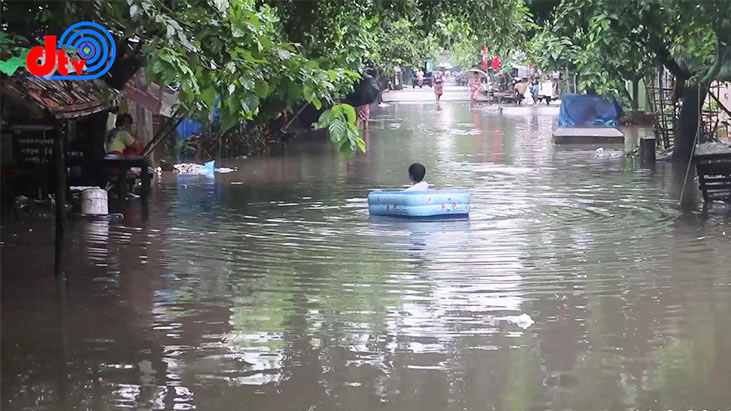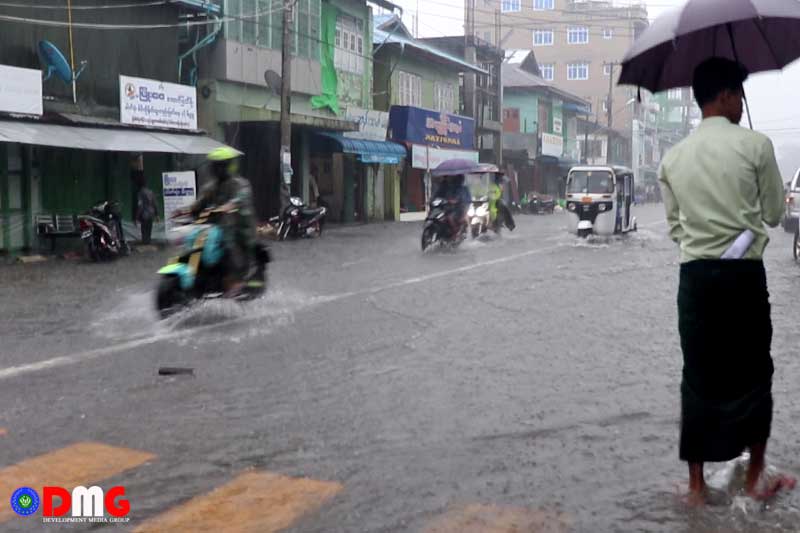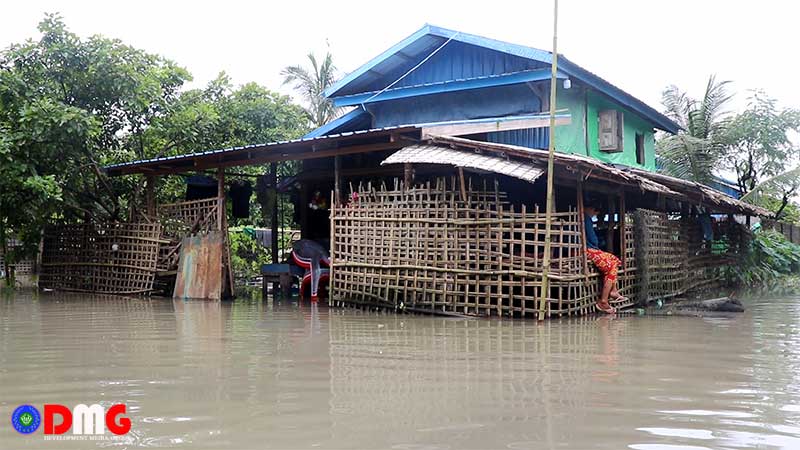Effective planning needed to curb flood disasters in Sittwe
Flooding occurs in wards of Arakan State’s capital Sittwe when it is raining continuously, especially in low-lying areas. Local residents relocate their important possessions from downstairs to upstairs; they have no other options.
25 Sep 2019

By Tun Kyaw Yee | DMG
Flooding occurs in wards of Arakan State’s capital Sittwe when it is raining continuously, especially in low-lying areas. Local residents relocate their important possessions from downstairs to upstairs; they have no other options.
Flood disasters in the region became much more apparent two decades ago and the situation has become more precarious.
Some local residents tried to tackle the problems that flooding creates. They have elevated the ground around their homes to keep rising waters from seeping into their homes. They have also built roadside ditches in front of their house to function as makeshift drainage systems. But, the problem of overwhelming flooding that occurs annually cannot be solved because effective plans have yet to drawn up to divert water from vulnerable areas.
Extremely heavy rain causes floods that create deep pools of water, any attempt to successfully reduce the risk of flooding in the region has not been seen so far.
Previously, under junta rule, all houses in the wards in Mrauk-U town were instructed to build roadside ditches in front of each and every house. Residents from wards and villages had to build roadside ditches on days authorities designated. Owners of the land, even if no house was on the property, had come and build roadside ditches for fear of being fined by authorities. But, ditches were not built systematically and lacked maintenance so they became ineffective.
It needs to have a plan that works effectively to alter the movement of water. Elevating the land or digging ditches are not perfect solutions.
Meanwhile, bad planning increases the risks of floods in the region while creeks are shallower than before. Rainwater in Sittwe city flows into river from Myo Lae, Khawathay and Sat Yoe Kya creeks. But, the runoff cannot enter into the river because of the Sittwe city extension project used soil that blocks the natural path of rainwater into the river. That creates higher embankments of land at the mouth of the creeks and rain water gets rerouted into the city.

In addition, a road project under the former chief minister U Maung Maung Own did not include road culverts to redirect the flow water from the wards into rivers. The project makes the road better, but it becomes a barrier for water in the city.
An authority from Shwe Pyar ward said that he was worried that the ward would face more flooding because the water channel from the ward to the river was filled with earth for the city extension project on Strand road. He mentioned to authorities to restructure the water channel, but nothing has been done.
In Singapore, rainwater from water catchment areas is collected through a network of drains, canals and rivers, then channeled to reservoirs before treated and distributed to households and industries. It is systematically arranged, so the Myanmar government should seek to have an effective drainage system in cities.

Meanwhile, new town projects were implemented regardless of having systematic drainage systems. The government did not arrange roads, sewage systems, a water supply and electricity access before building houses in the new town. That’s why some houses in the new town such as Sat Yoe Kya ward were inundated with rainwater. Residents are still facing flooding.
To combat the challenge of flooding in residential areas, the government needs to seek focused and effective approaches and residents should try to ensure a sustainable water drainage system.




.jpg)















